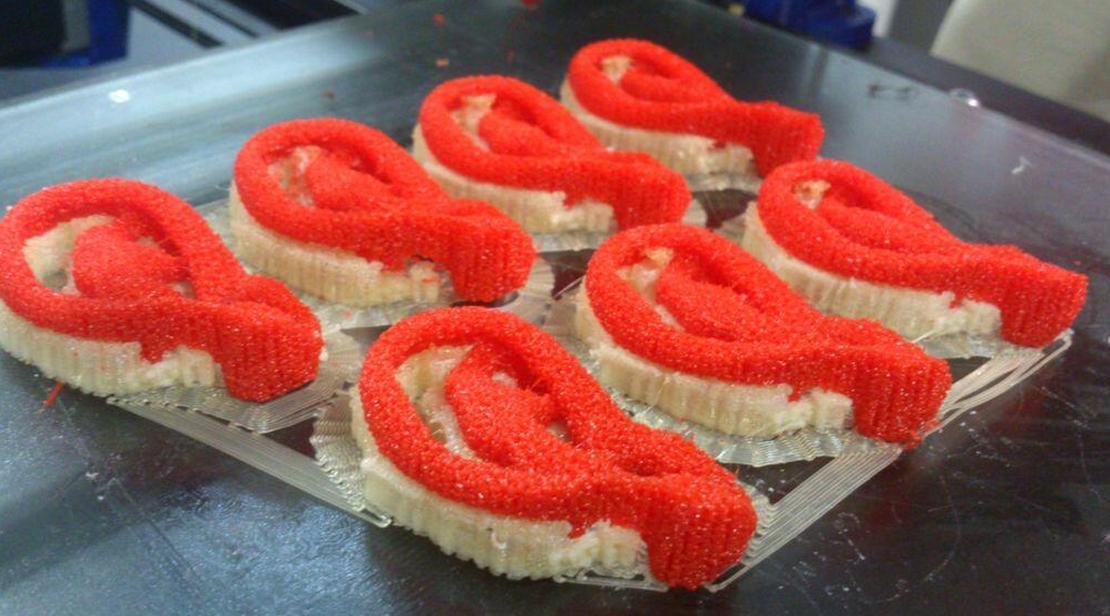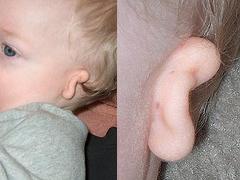When it comes to 3D printing in medicine, it’s one of those technologies which is only starting to break the surface. Only in the past year have we really begun to see surgeons and doctors around the world realize some of the tremendous benefits that this technology provides us with.
Mariangel Berroterán, a student from the Universidad Simón Bolívar (USB – Caracas, Venezuela), with the help of some individuals at the Fundació CIM (F-CIM – Barcelona, España), and the recommendation by three professors, have taken it upon themselves to try and make those living with a congenital deformity called microtia, have a more normal life.
Microtia is a deformity where the external ear is underdeveloped. It occurs in about 1 in 9,000 births, and can leave some individuals feeling self conscious about their appearance. There are four grades of microtia, ranging from Grade 1, which is the least severe, to a Grade IV which is the absence of the entire outer ear.
Mariangel Berroterán, is one of the students working on this assignment as her final project to get her Masters Degree at USB. She is working diligently trying to solve a problem that effects thousands of people worldwide.
“The main objective of this work is to propose an alternative solution for the congenital deformity called microtia,” Berroterán tells 3DPrint.com. “The main idea of this project, is to work on prototypes for ear reconstruction (implants), which can be used for tissue engineering. Here at F-CIM, we have printed scaffold prototypes for cell culture (for a future application), and a solid ear. This will be used for fabricating a silicone mold. Both kind of ears were printed with RepRap technology.”
Berroterán said her teams’ two main objectives include:
- Printing scaffolds (see image of red ear) with a biocompatible material for cell culturing.
- Printing a complete ear (see image of the blue ear), for the fabrication of a silicone mold.
The silicon mold will be used with another biocompatible material for the fabrication of ear implants. “This part of the project will be made in Venezuela, but here at F-CIM we are going to fabricate the silicon mold and that’s why we printed the completed ear,” explained Berroterán.
She also informed us that her main job on the project is to create the prototypes, the scaffolds, and the printed ear, which will be turned into a silicon mold. “The study has to be longer, and verify if the cell culture is [actually] possible in these scaffolds,” said Berroterán. “My ultimate goal is propose an alternative for ear reconstruction, using the 3D printing technology and biocompatible materials for the fabrication of implants with the ear geometry.”
In the photos seen on this site, the red ears are the scaffolds, which have been printed by Berroterán and her team. They were printed using PLA, however, these were done solely for test purposes of comparing properties between different printing conditions. The blue ears in the photos seen on this site are printed using ABS, and are to be used as a model for fabricating the silicon molds. When making the silicon molds, a hydrogel will be used in creating the ear implants.
Hopefully all goes as planned for Berroterán, and 3D printing can once again be used in the medical field to help those in need. This certainly won’t be the last time we hear of 3D printing being a prominent factor in reconstructive surgery. There will surely be more advancements in this technology as time goes on.
Discuss this amazing story, and the progress that Berroterán and her team have made in the 3D printed ear forum thread on 3DPB.com
Subscribe to Our Email Newsletter
Stay up-to-date on all the latest news from the 3D printing industry and receive information and offers from third party vendors.
You May Also Like
Profiling a Construction 3D Printing Pioneer: US Army Corps of Engineers’ Megan Kreiger
The world of construction 3D printing is still so new that the true experts can probably be counted on two hands. Among them is Megan Kreiger, Portfolio Manager of Additive...
US Army Corps of Engineers Taps Lincoln Electric & Eaton for Largest 3D Printed US Civil Works Part
The Soo Locks sit on the US-Canadian border, enabling maritime travel between Lake Superior and Lake Huron, from which ships can reach the rest of the Great Lakes. Crafts carrying...
Construction 3D Printing CEO Reflects on Being Female in Construction
Natalie Wadley, CEO of ChangeMaker3D, could hear the words of her daughter sitting next to her resounding in her head. “Mum, MUM, you’ve won!” Wadley had just won the prestigious...
1Print to Commercialize 3D Printed Coastal Resilience Solutions
1Print, a company that specializes in deploying additive construction (AC) for infrastructure projects, has entered an agreement with the University of Miami (UM) to accelerate commercialization of the SEAHIVE shoreline...

































